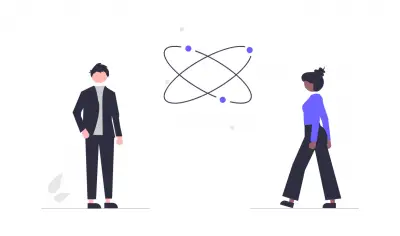
Physics Questions and Answers
If you want to learn more about the nature and properties of matter and energy or you're simply preparing for a Physics exam, these Physics past questions and answers are ideal for you.

If you want to learn more about the nature and properties of matter and energy or you're simply preparing for a Physics exam, these Physics past questions and answers are ideal for you.
1.25m
4.00m
6.25m
1.60m
Correct answer is A
u = 0, g = 10 \(ms^2\), v = 5 m/s, h = ?
From \(v^2 = u^2 + 2gh\)
⇒ \(5^2 = 0^2 + 2 × 10 × h\)
25 = 0 + 20h
25 = 20h
Therefore, h = \(\frac{25}{20}\) = 1.25m
The instrument used to measure relative humidity is a
Hygrometer
Barometer
Hydrometer
Manometer
Correct answer is A
The instrument used to measure relative humidity is a hygrometer. Relative humidity is the amount of moisture in the air compared to the maximum amount of moisture the air could hold at the same temperature. A hygrometer is a device used for measuring the moisture content in the atmosphere, soil, or confined spaces.
Ebonite rod
Proof Plane
Gold Leaf Electroscope
Electrophorus
Correct answer is C
The device used to compare the relative magnitudes of charges on two given bodies is a gold leaf electroscope.
A gold leaf electroscope consists of two thin gold leaves that are attached to a metal rod inside a glass or plastic enclosure. When a charged object is brought near the metal rod, it induces a charge on the leaves. The leaves, being like charges, repel each other and spread apart. By observing the degree to which the leaves separate, you can compare the relative magnitudes of charges on different bodies. This makes a gold leaf electroscope a valuable tool for demonstrating the presence and relative strength of electric charges.
the maximum potential difference the capacitor can withstand is increased
it increases the electrical conduction of the capacitor.
the capacitance of the capacitor of given dimensions is much greater than that of the plates in a vacuum.
it keeps the plates at a fixed separation.
Correct answer is B
The statement that is not an advantage of a solid dielectric material between the plates of a capacitor is:
it increases the electrical conduction of the capacitor.
In fact, one of the primary advantages of using a solid dielectric material between the plates of a capacitor is that it reduces electrical conduction between the plates. Dielectric materials are insulators, and they prevent the flow of electric current between the plates, thus increasing the capacitor's ability to store charge.
steel rod in the test tube
Nickel rod in the test tube
Brass rod in the test tube
Soft iron rod in the test tube
Correct answer is C
Inserting a brass rod in the test tube will not increase the strength of the magnetic field of the solenoid.
The strength of the magnetic field inside a solenoid depends on factors such as the number of turns of wire, the current passing through it, and the core material within the solenoid. Materials with high permeability, like soft iron and steel, can enhance the strength of the magnetic field when inserted into the solenoid. Nickel, which also has some ferromagnetic properties, would have a similar effect.
However, brass is not a ferromagnetic material; it does not enhance the magnetic field strength when inserted into the solenoid. In fact, it might even slightly reduce the magnetic field strength due to its non-magnetic properties.